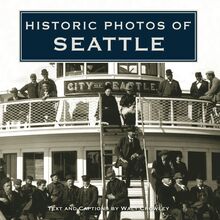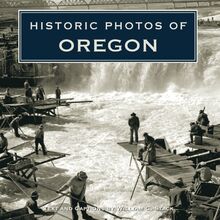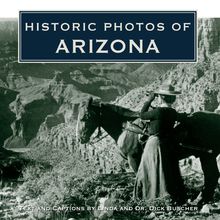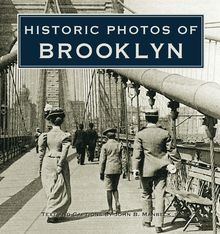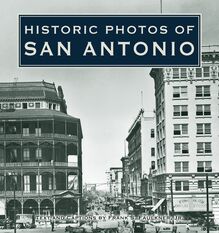Historic Photos of Huntsville , livre ebook
177
pages
English
Ebooks
2007
Vous pourrez modifier la taille du texte de cet ouvrage
Obtenez un accès à la bibliothèque pour le consulter en ligne En savoir plus
Découvre YouScribe et accède à tout notre catalogue !
Découvre YouScribe et accède à tout notre catalogue !
177
pages
English
Ebooks
2007
Vous pourrez modifier la taille du texte de cet ouvrage
Obtenez un accès à la bibliothèque pour le consulter en ligne En savoir plus
Publié par
Date de parution
01 juillet 2007
Nombre de lectures
1
EAN13
9781618586414
Langue
English
Poids de l'ouvrage
10 Mo
Publié par
Date de parution
01 juillet 2007
EAN13
9781618586414
Langue
English
Poids de l'ouvrage
10 Mo
HISTORIC PHOTOS OF
HUNTSVILLE
T EXT AND C APTIONS BY J ACQUELYN P ROCTER R EEVES
In the center of South Side Square was the T. T. Terry Building. In huge letters across the top of the building was their slogan, GREAT IS THE POWER OF CASH.
HISTORIC PHOTOS OF
HUNTSVILLE
Turner Publishing Company
200 4th Avenue North Suite 950
Nashville, Tennessee 37219
(615) 255-2665
www.turnerpublishing.com
Historic Photos of Huntsville
Copyright 2007 Turner Publishing Company
All rights reserved.
This book or any part thereof may not be reproduced or transmitted in any form or by any means, electronic or mechanical, including photocopying, recording, or by any information storage and retrieval system, without permission in writing from the publisher.
Library of Congress Control Number: 2007923673
ISBN: 978-1-59652-372-2
Printed in China
09 10 11 12 13 14-0 9 8 7 6 5 4 3 2
C ONTENTS
A CKNOWLEDGMENTS
P REFACE
W AR AND R ECONSTRUCTION (1850-1899)
A N I NDUSTRIAL R EVOLUTION (1900-1919)
P ROSPERITY TO THE G REAT D EPRESSION (1920-1939)
F ROM C OTTON F IELDS TO R OCKET S HIPS (1940-1970)
N OTES ON THE P HOTOGRAPHS
John Stallworth, third from left, is honored by his college alma mater, Alabama A M University. John went on to become a pro football player (wide receiver) with the Pittsburgh Steelers before returning to Huntsville to become a successful businessman. After a stellar career, he was named to the NFL Hall of Fame. He still holds Super Bowl records.
A CKNOWLEDGMENTS
This volume, Historic Photos of Huntsville is the result of the cooperation and efforts of many individuals, organizations, and corporations. It is with great thanks that we acknowledge the valuable contribution of the Huntsville Public Library staff for their generous support.
We would also like to thank the following individuals for valuable contributions and assistance in making this work possible:
Tim Griffin, Historian
Mona Mitchell, Technical Processing, Huntsville Public Library
Thomas Hutchens, Heritage Room, Huntsville Public Library
Rane Pruitt, Archivist, Huntsville Public Library
Jim Maples, Historian and Editor
Robert Reeves, who identified the dates of many photographs by the automobiles in them
This project represents countless hours of review and research. The researchers and writer have reviewed thousands of photographs. We greatly appreciate the generous assistance of the archives listed here, without whom this project could not have been completed.
The goal in publishing the work is to provide broader access to a set of extraordinary photographs. The aim is to inspire, provide perspective, and evoke insight that might assist officials and citizens, who together are responsible for determining Huntsville s future. In addition, the book seeks to preserve the past with respect and reverence.
With the exception of touching up imperfections caused by the vicissitudes of time and cropping where necessary, no other changes have been made. The focus and clarity of many images is limited to the technology of the day and the skill of the photographer who captured them.
We encourage readers to reflect as they explore Huntsville, stroll along its streets, or wander its neighborhoods. It is the publisher s hope that in making use of this work, longtime residents will learn something new and that new residents will gain a perspective on where Huntsville has been, so that each can contribute to its future.
- Todd Bottorff, Publisher
P REFACE
What is a photograph? More than ink on paper, a record of the past, or an image in time, a photograph captures a moment that can never be recreated, a moment forever recorded that sparks the imagination not only of those who lived it but of those not yet born when the shutter was clicked.
Look into these images of the past and see the muddy streets, feel the chill that comes with the winter snow, listen to the brass band of a 4th of July parade, and cheer for the success of the moon landing. Imagine the wariness of the Union soldiers who occupied a Rebel town, as well as the fear of the residents under that occupation. We read about the many events in our history, but words are not enough to describe the joyous smiles on youngsters or the lined and weathered faces of veterans who saw war so many years before. We are fortunate to see these captured moments in time.
No images exist from 1805, when pioneer John Hunt established his home at the Big Spring, a body of water under a bluff that has served as the heart of this ever-changing community for more than 200 years. The town of Hunt s Spring became Twickenham for a brief period, before being permanently named Huntsville in honor of its first white settler. The first Constitutional Convention was held here in 1819, making Huntsville the provisional capital as well as the county seat. Cotton thrived in the rich soil. It represented a source of wealth for some but back-breaking labor for the large number of slaves brought here to harvest the white gold.
A few of these images may look familiar to Huntsvillians and former residents, but many are of places lost to the ravages of fire and urban renewal. Our structures of 150 years ago dictated taste and refinement, an ideal now overshadowed by cost and efficiency. Few of us can comprehend the hustle and bustle of our downtown in past decades, before television drew us inside and shopping malls pulled customers and stores to the suburbs. Many of these pictures from the past, never before published, are now available for the first time to new generations.
Many people helped create this book. Without their expertise and enthusiasm, we could not offer this treasure. We appreciate their willingness to share their knowledge.
Millions of photographs are taken every day-for a special occasion or no particular reason at all. In our distant past, however, very few pictures were made and even fewer have survived. Look at the faces of those long gone and feel their pride and their heartaches and imagine their everyday lives. Will future generations wonder about our own lives, long after we are gone, as they gaze into our eyes captured in photographs? Of course they will! Though buildings come and go, our images, and perhaps even a smidgen of our personalities, will remain in each and every timeless photograph.
- Jacquelyn Procter Reeves
Architect George Steele designed this Greek Revival bank in 1835. His highly trained slaves were the artisans who constructed it. The oldest bank in continual use in the State of Alabama, it is presently home to Regions Bank.
W AR AND R ECONSTRUCTION
(1850-1899)
In April, 1861, Huntsville native Leroy Pope Walker, as secretary of war for the newly formed Southern Confederacy, sent orders to fire on Fort Sumter in the harbor of Charleston, South Carolina, the action that began the Civil War. One year later, Union soldiers marched into Huntsville, surprised its inhabitants and captured the town. In retrospect, Huntsville fared better than most of its neighboring cities. Because there was neither time nor men available to provide resistance, it was not laid to waste, and for that reason, many of our beautiful antebellum structures still exist.
For the remainder of the war, Huntsville was occupied, off and on, by Union soldiers who pitched their tents on the courthouse square or at Maple Hill Cemetery (then known simply as the burying ground ), or they took up residence in one of the many spacious homes in the historic Twickenham District.
The conflict finally ended in 1865, after four years of lost lives and bloodied fields. Weary soldiers came home to begin again in a country transformed by war. Former slaves struggled to find their new place in the changed world. In time, fields of fluffy, white cotton once again stretched as far as the eye could see. In the late 1800s, money began to flow into the area from Northern investors- Yankee money -and cotton mills were established to provide thousands of jobs, albeit low-paying ones, to those anxious for work. Mini-towns sprang up around each mill, and although citizens of those mill towns were all considered residents of Huntsville, they found themselves in competition and sometimes in conflict with each other.
The end of the century found Huntsville once again full of soldiers, after the brief Spanish-American War; as many as 15,000 came here to recover from the effects of yellow fever before mustering out. The 10th Cavalry Regiment-African American troops known as Buffalo Soldiers-were among those who stayed briefly in Huntsville. They were encamped at what is still known today as Cavalry Hill. Future World War I commander John Black Jack Pershing stayed in Huntsville during that period, and the city enjoyed several visits from U.S. Major General Joseph Wheeler, formerly a brilliant Confederate cavalry leader.
Madison County s second courthouse was designed by architect George Steele. This beautiful Greek Revival structure was built in 1835 and torn down in 1914. The dome was copper-clad. A sign at the gate states, Five dollar fine for hitching within ten feet of this gate.
Bringing cotton into town to sell was a big event for farmers and spectators, as seen in this 1860 photograph.
The towering steeple of the Church of the Nativity Episcopal soars above the buildings on Eustis Street from the southeast corner of the courthouse square. The castle-like church to the left was also an Episcopal Church. This appears to be around the time of the Civil War.
Two tents occupy the open lot on East Side Square, known as Cheap Side Row. Churches in the background are the Presbyterian Church, the old Episcopal Church, and the Church of the Nativity. There is speculation that the tents belonged to Union soldiers who occupied Huntsville during the Civil War. Barely visible in the upper left side of the picture is the partially obscured front of LeRoy Pope s mansion on Echols Hill. He was the



